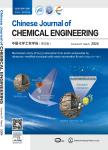Separation of chitin from shrimp shells enabled by transition metal salt aqueous solution and ionic liquid
作者机构:Key Laboratory of Molecular Medicine and BiotherapyMinistry of Industry and Information TechnologySchool of Life SciencesBeijing Institute of TechnologyBeijing 100081China Key Laboratory of Medical Molecule Science and Pharmaceutics EngineeringMinistry of Industry and Information TechnologyAdvanced Research Institute of Multidisciplinary ScienceBeijing Institute of TechnologyBeijing 100081China CAS Key Laboratory of Green Process and EngineeringState Key Laboratory of Multiphase Complex SystemsState Key Laboratory of Biochemical EngineeringBeijing Key Laboratory of Ionic Liquids Clean ProcessInstitute of Process EngineeringChinese Academy of SciencesBeijing 100190China School of Chemical and EngineeringUniversity of Chinese Academy of SciencesBeijing 100049China Innovation Academy for Green ManufactureChinese Academy of SciencesBeijing 100190China
出 版 物:《Chinese Journal of Chemical Engineering》 (中国化学工程学报(英文版))
年 卷 期:2023年第53卷第1期
页 面:133-141页
核心收录:
学科分类:08[工学] 0805[工学-材料科学与工程(可授工学、理学学位)] 0703[理学-化学]
基 金:support of the Startup Foundation of China(3160011181808) the National Natural Scientific Foundation of China(21878292,81673400) K.C.Wong Education Foundation(GJTD-2018-04).
主 题:Chitin Ionic liquids Transition metal salts Separation Sustainability
摘 要:Chitin is a widely used important industrial polymer mainly from shrimp shells, but its commercial preparation is under the great challenge of serious pollution due to the requirement of HCl and Na OH.Herein, we demonstrated that high purity chitin can be obtained from waste shrimp shells(WSSs) by cascade separation with transition metal salt aqueous solution and ionic liquid(IL). Firstly, calcium carbonate of WSSs was effectively removed in the metal salt aqueous solution driven by the ion exchange interaction. Subsequently, 1-butyl-3-methylimidazolium chloride([Bmim]Cl) had bifunctional abilities to remove residual protein and introduced metal salts simultaneously by hydrogen bonding and coordination interactions. The key experimental factors affecting the separation process were systematically studied, including the type of metal salts, temperature, and [Bmim]Cl loading. After sequential treatment with a 20%(mass) Ni SO4aqueous solution at 130 ℃ and [Bmim]Cl at 150 ℃, the purity of a-chitin can be up to 96.5%(mass) that meets commercial requirements. The use of metal salts with higher coordination ability makes the preparation of chitin no longer depend on the commonly acid-base reaction, which is conducive to the preservation of chitin structure.



